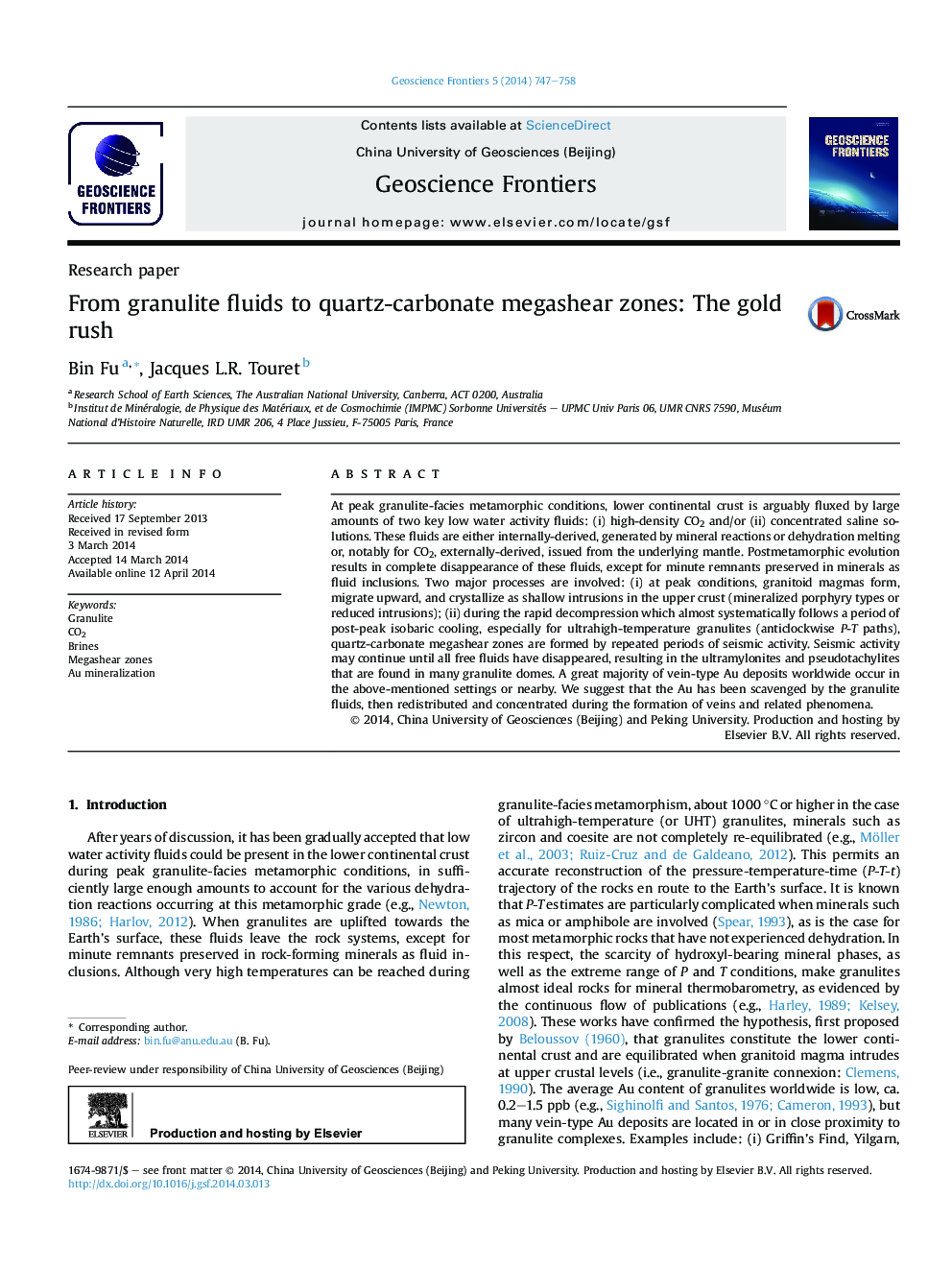| Article ID | Journal | Published Year | Pages | File Type |
|---|---|---|---|---|
| 4681682 | Geoscience Frontiers | 2014 | 12 Pages |
•Granitoid magma may form during fluid-assisted granulite-facies metamorphism.•Most granulite fluids are eliminated through late quartz-carbonate megashear zones.•Gold has been scavenged by granulite fluids, precipitated during veining.
At peak granulite-facies metamorphic conditions, lower continental crust is arguably fluxed by large amounts of two key low water activity fluids: (i) high-density CO2 and/or (ii) concentrated saline solutions. These fluids are either internally-derived, generated by mineral reactions or dehydration melting or, notably for CO2, externally-derived, issued from the underlying mantle. Postmetamorphic evolution results in complete disappearance of these fluids, except for minute remnants preserved in minerals as fluid inclusions. Two major processes are involved: (i) at peak conditions, granitoid magmas form, migrate upward, and crystallize as shallow intrusions in the upper crust (mineralized porphyry types or reduced intrusions); (ii) during the rapid decompression which almost systematically follows a period of post-peak isobaric cooling, especially for ultrahigh-temperature granulites (anticlockwise P-T paths), quartz-carbonate megashear zones are formed by repeated periods of seismic activity. Seismic activity may continue until all free fluids have disappeared, resulting in the ultramylonites and pseudotachylites that are found in many granulite domes. A great majority of vein-type Au deposits worldwide occur in the above-mentioned settings or nearby. We suggest that the Au has been scavenged by the granulite fluids, then redistributed and concentrated during the formation of veins and related phenomena.
Graphical abstractFigure optionsDownload full-size imageDownload as PowerPoint slide
